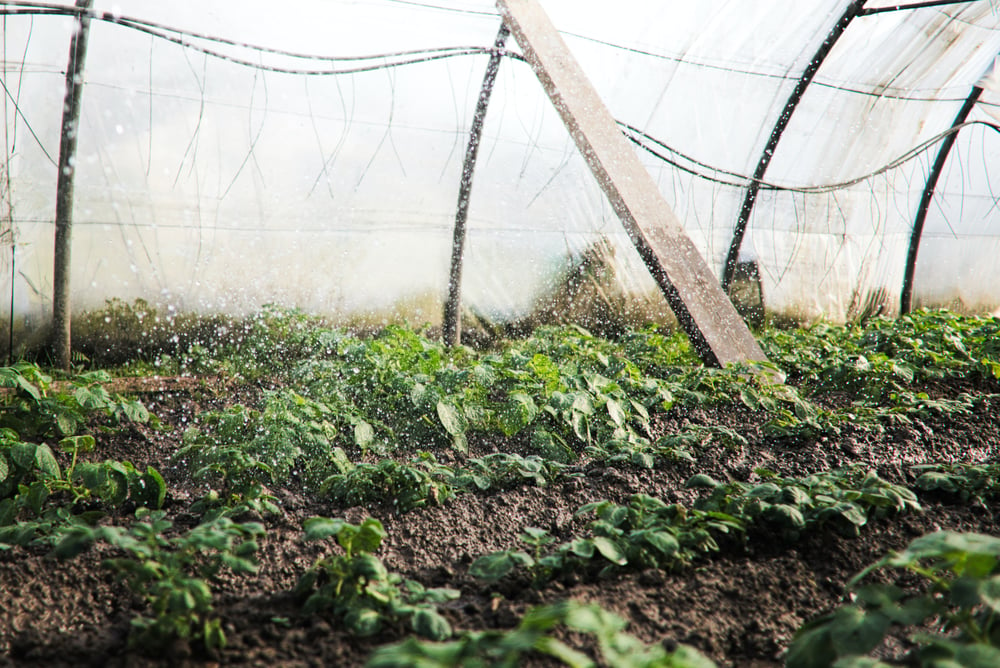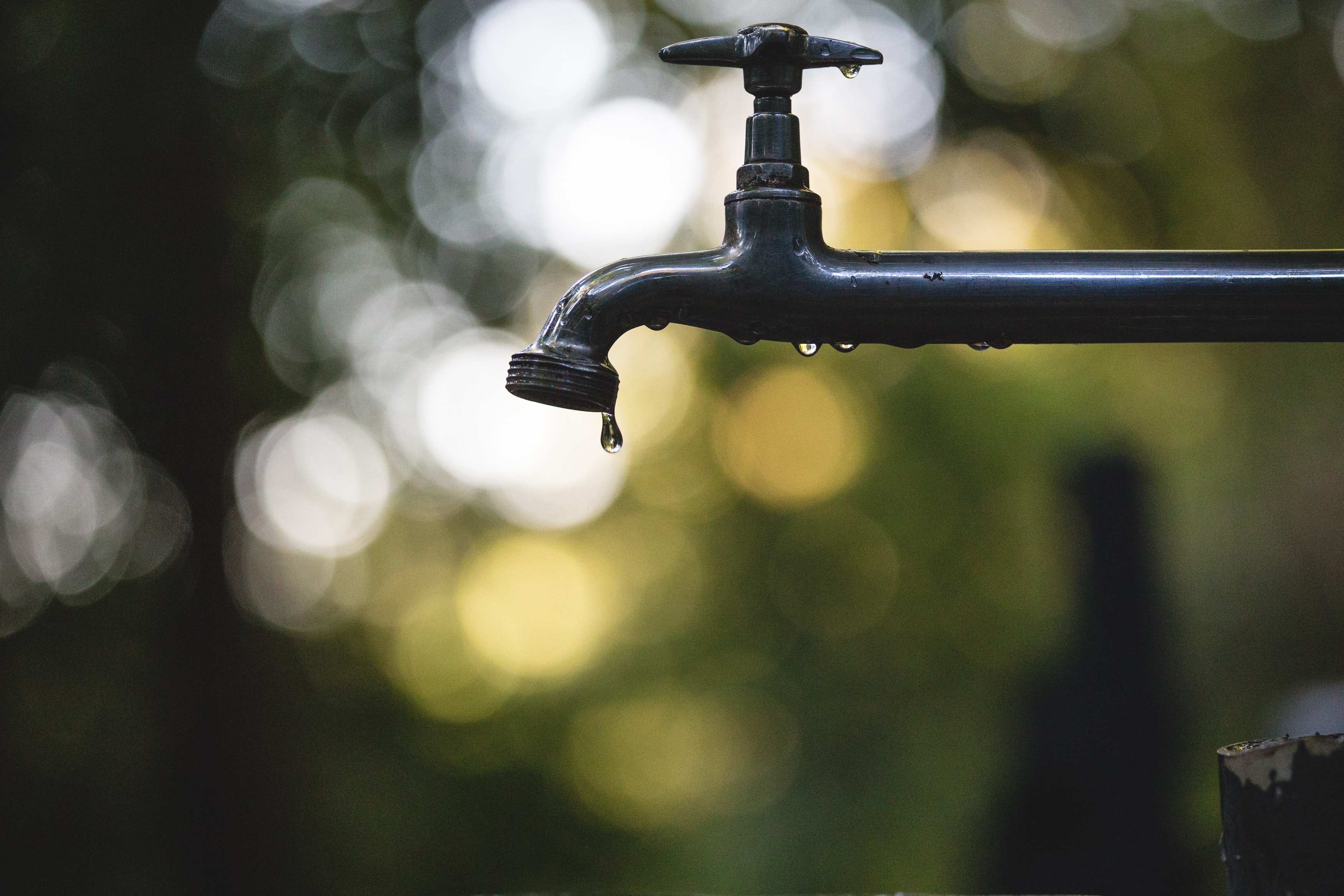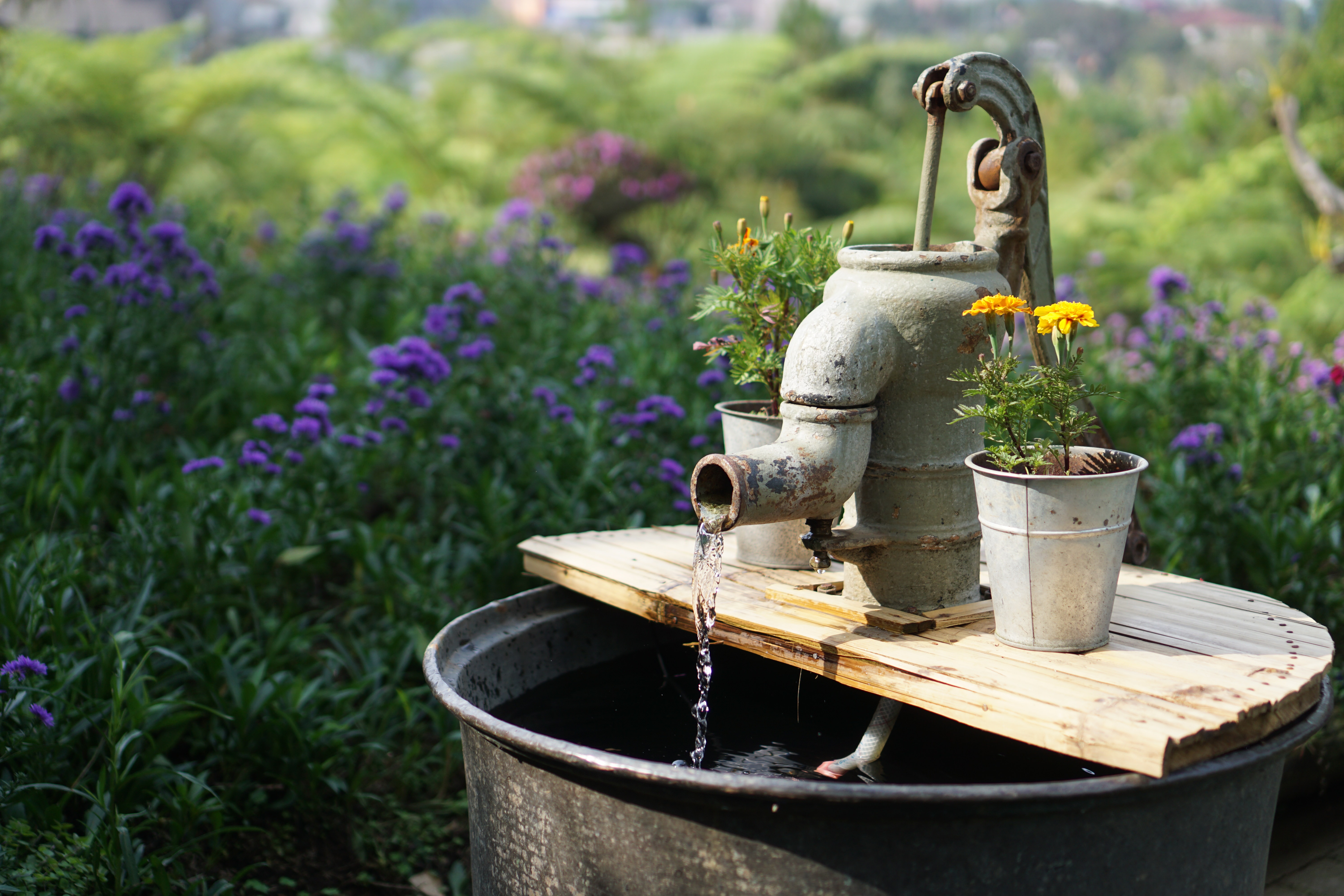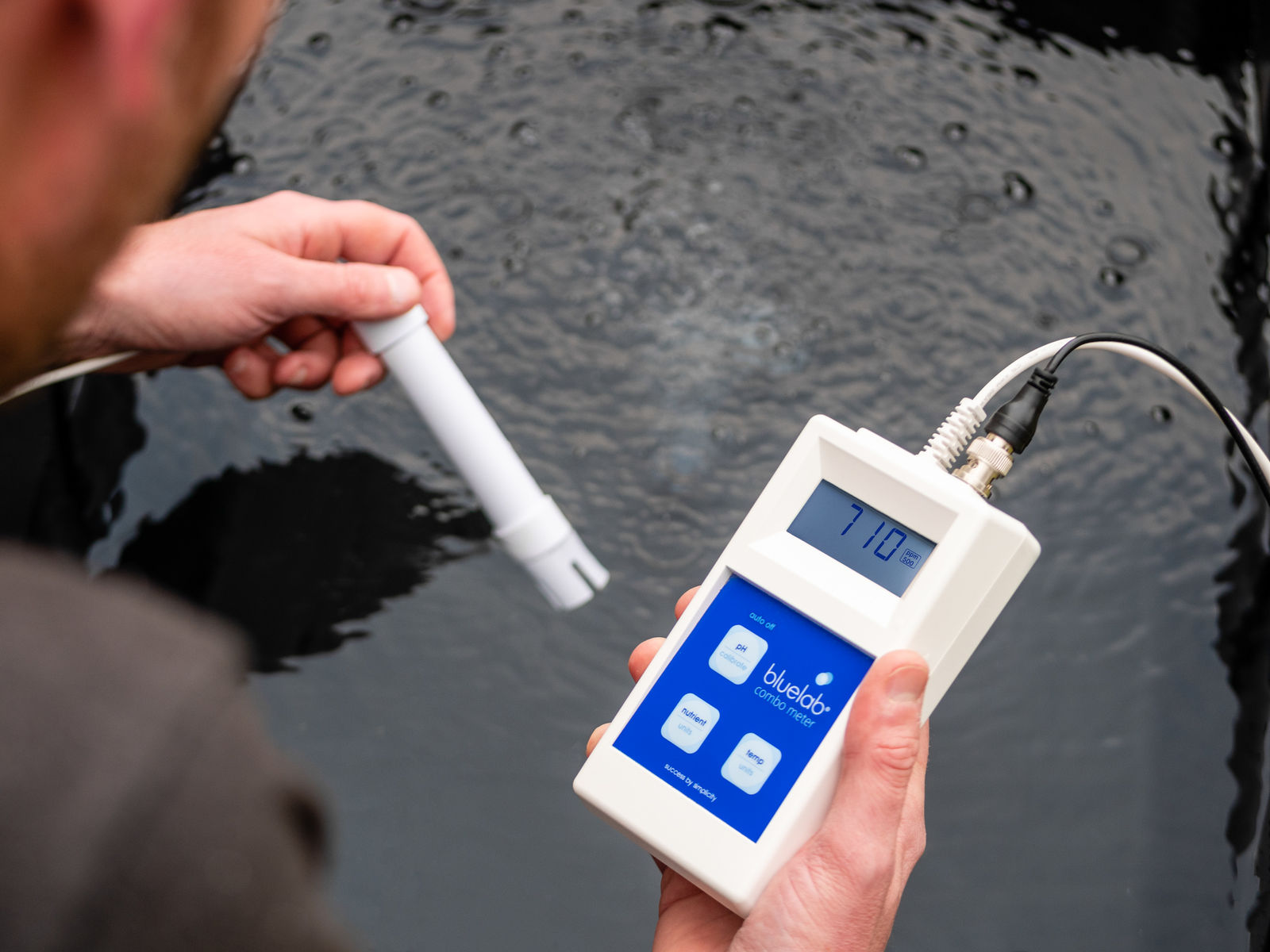
Kasha Dubaniewicz
Kasha is passionate about high-impact storytelling and believes in making positive changes that will lead to a better and happier world for all.
Why does water quality matter?
Have you ever heard a grower speak about needing to use RO water or telling you to be careful of your municipal water as it may be too 'hard'? This kind of jargon can be confusing but having a good understanding of water quality can be your make or break when it comes to thriving plant growth.

That's because the quality and content of the water you use is key to the success of your growing system. Water can contain contaminants that cause a wide array of issues, from reducing irrigation flow and affecting plant nutrients to inhibiting the control of pathogens.
Start by finding out how pure your water is, meaning how close it measures to pH 7.0 and an EC value of zero or very close to zero.
Since there are very few sources of pure water, you should establish a water monitoring and treatment programme so that you can enhance your water’s ability to hydrate and transport essential minerals and nutrients to your crops.
When you’re aware of your water quality, you can determine the level of treatment needed and prevent problems before they happen.
What is pure water and what are the benefits of using it?
Pure water is composed of equal parts the hydrogen ion (H+) and hydroxyl ion (OH- ) and nothing else. A balance of H+ and OH- produces a neutral pH of 7.0. Pure water contains no other minerals, microbes, pathogens or contaminants.
That's why pure water is used as a reference point in growing systems, as there are no contaminants interfering with water treatment and there’s nothing present that could be detrimental to plant growth or the performance of added nutrients.
There are treatment processes you can use to get your source water as close to pure water as possible, such as through reverse osmosis (RO) or deionisation (DI). We'll cover common treatment methods later in this blog post.
For now, here are the main benefits of using pure water:
- No waste ions: these ions can disrupt the optimal nutrient ratios once a nutrient mix is added. For example, waste ions like sodium can limit the uptake of essential nutrients like potassium.
- No physical, chemical or biological contaminants: when nutrients are added, these contaminants could react and result in an insoluble precipitate that's unavailable to the plant.
- No elements that could harm biological treatments: these beneficial microbes could be present in growth media or other biological control organisms that may be part of an integrated pest management (IPM) programme.
- No pathogens or insoluble matter present: these could interfere with water disinfection treatments.
- No unwanted salts: these could potentially cause plant health issues.
What types of source water are available?

Source water refers to the water you have available to use for irrigation. You won’t always be able to choose your source water, but it’s good to be aware of each type’s advantages and disadvantages.
There are several water sources; some are natural, like rainwater, surface water and groundwater, while domestic or tap water is also a common option.
Rainwater: This is often considered to be the best water for crop irrigation. The natural water cycle results in water that is quite pure with only small traces of minerals due to reactions with atmospheric gases. However, when collecting rainwater from roof structures, this water could contain contaminants, such as lead and asbestos.
Groundwater: This type of water can be good for crop irrigation. It may, however, have high levels of dissolved minerals such as calcium carbonate, especially if limestone is present. The pH may be higher as a result. Groundwater can also be contaminated by material leaching into it from surface activities, such as waste disposal, farming or industry.
Domestic or tap water: The quality of this type of water can be varied, depending on its origin and how it's been treated. Normally, tap water is purified through filtration or desalination; chlorine or chloramine could also be added to neutralise pathogens. These added elements can cause slow plant growth and negatively impact the microbes present in your growing environment.
No matter which source water you use, you need to monitor it consistently so that you always know its levels of contaminants and can therefore carry out effective treatments.
You can do this by regularly monitoring the EC and pH of your source water to determine the starting point for your plant nutrition and water treatment systems. The closer the EC value is to zero and the pH value to 7.0, the better.
Common characteristics of untreated water

The following characteristics are some the most common features you can expect to find in untreated water.
Water hardness: This water generally has a high mineral content, commonly from excessive quantities of calcium and magnesium. This causes nutrient ratio imbalances when adding set nutrient mixes. In addition, calcium increases the risk of calcium sulfate precipitate buildup, which can lead to equipment blockages. You can buy nutrient mixes for hard water, but unless you know the exact levels of the excess elements present, this isn’t always a fail-proof solution.
Salinity: There could be different types of salts present, such as sodium chloride, carbonate and bicarbonate, which can have a detrimental impact on the availability of water to your crops. While some of these are essential plant nutrients, the excessive amounts will disrupt nutrient ratios and result in toxicity. To avoid this, you can measure the EC of your source water to have an idea about its total salt concentration.
Alkalinity: This means that your source water has high levels of bicarbonates, which are alkaline compounds that cause the pH value to rise. You can fix this by adding acid, but if you already have a very high alkalinity, this acts as a very effective chemical buffer. This means it can be difficult to shift the pH to the optimal level for nutrient availability. If you notice that your pH value requires a large quantity of a pH-down adjuster and then rapidly decreases, you may have an issue with alkalinity.
Water treatment methods
If your current source water isn’t up to standard, these are the usual treatment options:
- Deionising: This process removes all charged ions through the use of ion exchange membranes. This method won’t remove pathogens or microbes from your water.
- Reverse osmosis: This method uses a semi-permeable membrane to purify water by removing ions, molecules and larger particles. It can’t remove pathogens or microbes, but it's an effective way to remove unwanted nutrients and elements.
- Ultraviolet (UV) light treatment: UV light acts as a chemical-free disinfecting agent to effectively remove microorganisms (such as bacteria, viruses and pathogens) from water supplies. Keep in mind that UV light can have a negative effect on crop health, as well as people and animals. It doesn’t remove ions or other contaminating particles.
How to test your source water

You should be testing your source water regularly. You can choose to send samples for laboratory analysis, but the simplest and quickest way is to use the following fundamental measurements to monitor quality:
- pH: Ideally, your source water should have a pH of 7.0. As mentioned earlier, the presence of bicarbonates will cause the pH to rise. Measuring your pH can indicate the presence of contaminants.
- Electrical Conductivity (EC): Pure water doesn't have any content that can conduct electricity, so the EC value should be zero. By measuring your EC, you’ll get an idea of the presence of ionic nutrients, elements or heavy metals that may disrupt a carefully calibrated growing system. However, even with an EC reading of zero, non-ionic contaminants could still be present.
When is the best time to test your water?
- Before adding nutrients: Let's face it - nutrients are expensive so you don’t want to add what’s already there. Nor do you want to risk nutrients precipitating out of the solution or having toxic effects on the plants. The aim is to maintain optimal nutrient ratios.
- Once your nutrients have run through your hydroponic system: you can examine the strength of your nutrient solution at this stage, but keep in mind that you won’t be assessing water quality alone.
Want to start testing your water? Here are our top product recommendations:
- Bluelab pH Pen: This fast and accurate handheld pen will help you measure pH and temperature in water and solution on the go.
- Bluelab Conductivity Pen: This convenient handheld pen will take quick EC and temperature readings in water and solution.
- Bluelab Combo Meter: Measuring the parameters of pH, conductivity and temperature at the click of a button in water and solution, this three-in-one meter will become your go-to growing companion.
- Bluelab Guardian Monitor: This wall-mounted monitor will measure and monitor your reservoir 24/7 for EC, pH and temperature.
- Bluelab Pro Controller: This hard-working controller measures, monitors and adjusts your nutrient solution around the clock for EC, pH and temperature.
Want to find out more about the plant health fundamentals? Check out our blog posts on conductivity and pH.




Submit a Comment